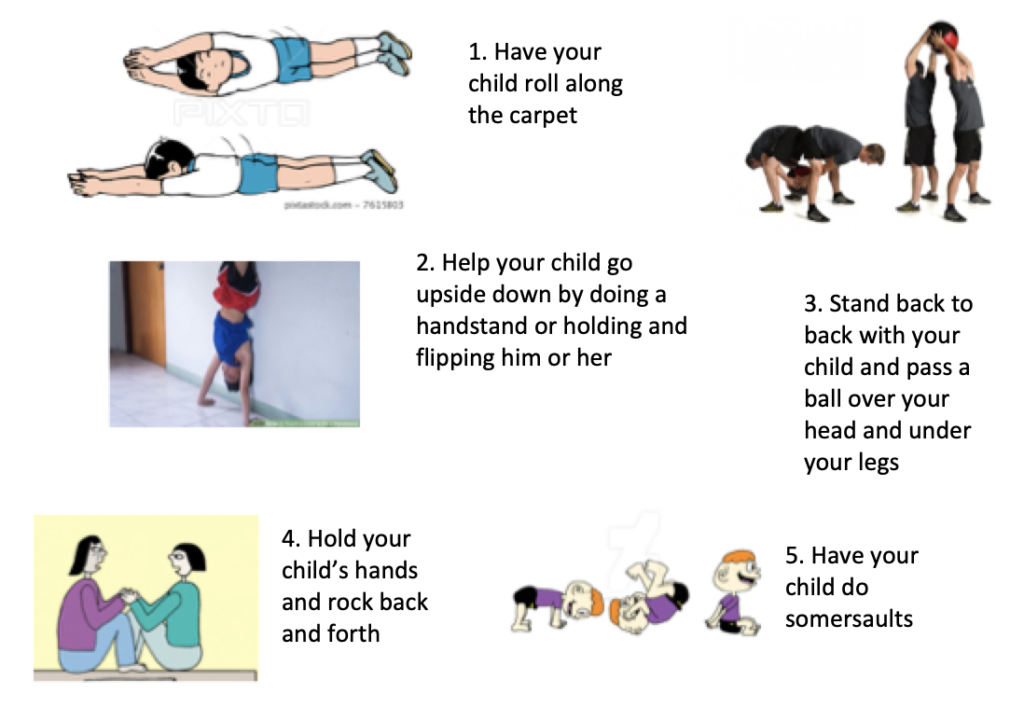
Vestibular System Continued
Below are more vestibular-focused activities with little to no equipment that you can implement at home to provide sensory input for your child. Refer to last month’s newsletter for more information regarding how the vestibular system works, and how to understand your child’s tendencies. As a reminder: in general, linear vestibular input (rocking, bouncing) tends to be calming and rotary vestibular input (spinning) tends to be alerting. Remember to pay close attention to your child’s response to ensure the input improves regulation, and have fun!

Remember: It is a good idea to follow vestibular activities with exercises that provide proprioceptive input to improve regulation. Refer to the previous newsletter for information about proprioceptive activities.
© Copyright 2022 Rebecca School. All Rights Reserved.
Learning Through Relationships


Leave a Reply